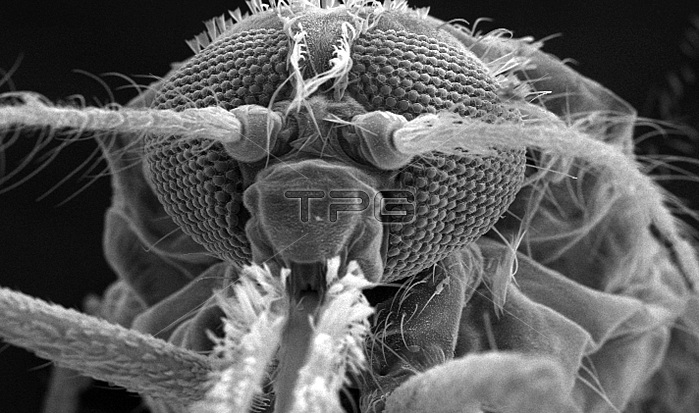
At a moderate magnification of 114x, this scanning electron micrograph (SEM) revealed some of the morphologic features displayed on the exoskeletal surface of an Anopheles gambiae mosquito's anterior head region. Included in this field of view were the two bilaterally located antennae, the proboscis, and two maxillary palps, the clypeus, to which the aforementioned structures are attached, and two bilateral multifaceted compound eyes. The head is specialized for acquiring sensory information and for feeding. Appearing as ruffled, "feathery" structures, the two "maxillary palps", which in the Anopheles mosquitos are as long as the proboscis, act as sensorial organs providing the insect with information on environmental changes in temperature and chemistry, as do the two antennae medial to the mosquito's eyes. The compound eyes, made up of a multitude of repeating subunits known as "ommatidia", provide the organism with a unified multifaceted mosaic appearance of its surroundings. Also seen in the field of view was the "V"-shaped "labrum", as it led into the mouth of the mosquito. Contained in a sheath, the labrum is the larger of two sharp structures known as "stylets", which pierce the skin of its hosts, and together are known as the "fascicle". Together the sheath and stylets are known as the proboscis.
| px | px | dpi | = | cm | x | cm | = | MB |
Details
Creative#:
TOP22225111
Source:
達志影像
Authorization Type:
RM
Release Information:
須由TPG 完整授權
Model Release:
N/A
Property Release:
No
Right to Privacy:
No
Same folder images:

 Loading
Loading